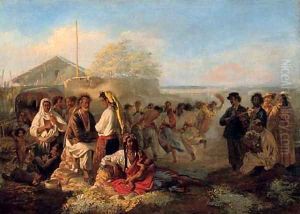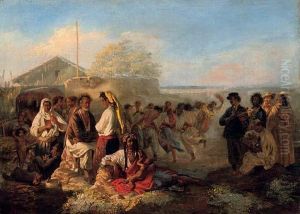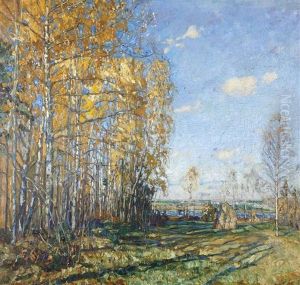Rudolf Kazimirovich Zhukovskii Paintings
Rudolf Kazimirovich Zhukovskii was a Russian landscape painter, born on August 16, 1873, in Tambov Governorate of the Russian Empire. He was a representative of the Russian realist tradition, and his works are characterized by a sensitive treatment of natural light and atmospheric effects, often exploring the serene countryside of Russia.
Zhukovskii's artistic journey began in earnest when he enrolled at the Moscow School of Painting, Sculpture and Architecture. There, he studied under notable painters such as Isaac Levitan and Alexei Savrasov, both of whom had a significant influence on his style. After graduating, Zhukovskii traveled to Europe, where he was exposed to the works of the French Impressionists, which further shaped his approach to color and light in his own landscapes.
Throughout his career, Zhukovskii was active in various artistic societies, including the Union of Russian Artists and the Association of Traveling Art Exhibitions, known as the Peredvizhniki, a group that aimed to make art more accessible to the general public. He took part in many exhibitions, and his works were well received for their poetic and evocative depiction of the Russian landscape.
After the Russian Revolution of 1917, Zhukovskii faced new challenges under the Soviet regime. Despite the shifts in the political landscape, he continued to work and adapt, though he never fully embraced the Socialist Realist style that became the official art form of the Soviet Union. Instead, he maintained his focus on landscapes, capturing the essence of Russia's natural beauty without overt political commentary.
Rudolf Kazimirovich Zhukovskii passed away on November 23, 1947, in Moscow. Despite the turbulent times he lived through, his work remains a testament to the enduring appeal of the Russian landscape and the power of art to capture a sense of place that transcends the specifics of time and politics. His paintings can be found in various museums and private collections, continuing to inspire lovers of landscape art around the world.


